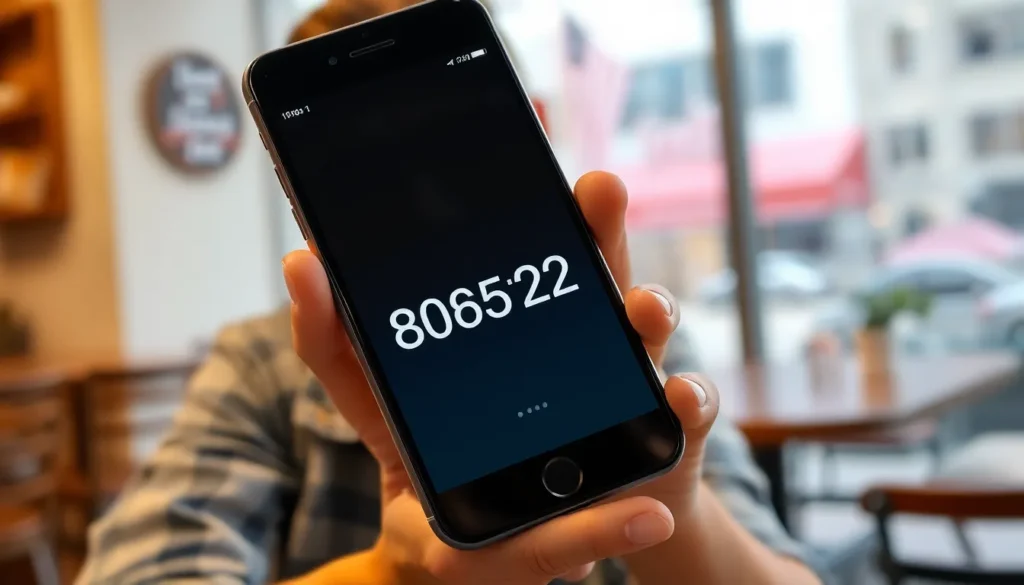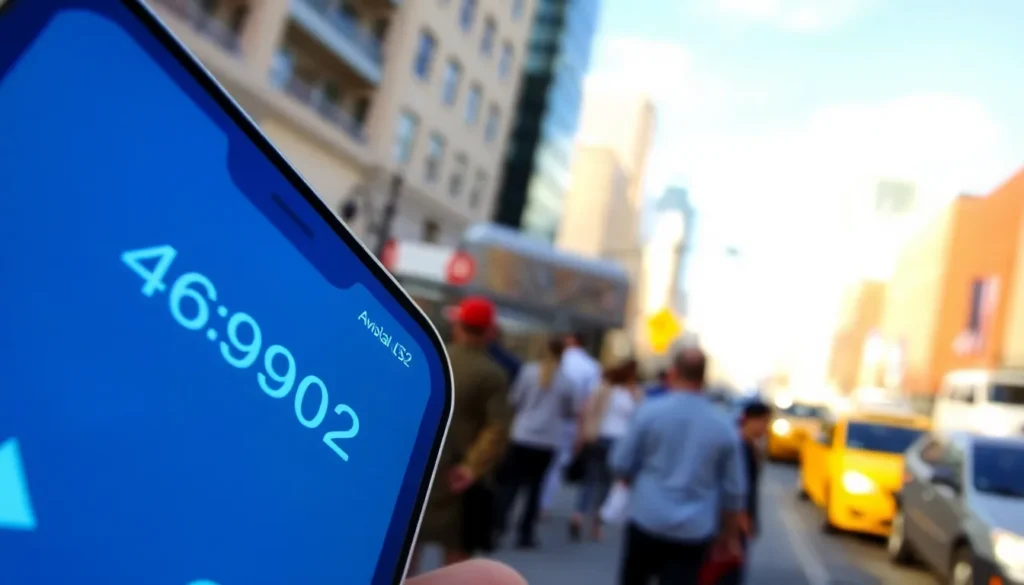Table of Contents
ToggleIn a world where “Je ne sais quoi” can leave you scratching your head, Google’s French to English translation tool is here to save the day. Whether you’re trying to impress a date with your newfound French flair or simply deciphering a menu that looks more like a puzzle than a meal, this tool has got your back.
With just a few clicks, it transforms those tricky French phrases into clear English, making language barriers a thing of the past. But let’s be real—sometimes the translations can be hilariously off. Ever wondered what “un petit gâteau” really means? Spoiler alert: it’s not a “little cake” when Google gets creative! Get ready to dive into the quirks and perks of using Google for your French translation needs.
Overview of French to English Translation
Google’s French to English translation tool offers significant advantages for users aiming to bridge language gaps. Utilization of this technology simplifies communication in various contexts, including travel, business, and casual conversations. It accommodates a wide range of phrases, from everyday expressions to complex sentences.
Accuracy remains a vital aspect of language translation. Although Google’s algorithm provides clear translations, some outcomes can stray from the intended meaning. For example, amusing results emerge with phrases like “un petit gâteau,” which translates directly to “a small cake.” This highlights an important caution: users should verify translations, particularly for nuanced or culturally specific expressions.
Integration of context enhances the effectiveness of translations. Users benefit from features like voice input and photographic translation, which improve accessibility. Adjustments for context ensure that translated phrases convey the correct tone, whether formal or informal.
Additionally, Google continuously updates its translation models. These enhancements aim to refine understanding of idiomatic expressions and regional variations. The tool’s learning capability draws from vast data sets, enabling it to respond to linguistic trends.
While Google’s translations serve many practical purposes, human translators remain essential for accuracy in more complex scenarios. The subtleties of language, including idioms and humor, often require a nuanced understanding that automated tools may miss. Therefore, users should assess their needs, choosing Google’s translation for quick tasks and consulting human experts for in-depth communication.
Accessibility and ease of use further underline the tool’s value. With a few taps, users can translate text on webpages, documents, and messages, making French to English translation more convenient than ever.
Features of Google Translation

Google Translation offers a variety of features that enhance the translation experience. Users enjoy an intuitive interface that prioritizes ease of access and functionality.
User Interface and Accessibility
Google Translation features a user-friendly interface designed for seamless navigation. The layout allows users to input text quickly or upload files for translation. Accessibility features include voice input, which enables users to speak phrases rather than type them. This functionality caters to diverse user preferences, ensuring everyone can benefit from the tool. Mobile compatibility further enhances usability, allowing translations on-the-go. While the tool offers instant results, it encourages users to double-check translations for accuracy, especially in more complex contexts.
Supported Languages and Dialects
Google Translation supports over 100 languages and various dialects, making it versatile for global communication. From widely spoken languages like Spanish and Mandarin to regional dialects, it covers a broad spectrum. This extensive language database helps bridge communication gaps across cultures. Users access translations in real-time, facilitating business, travel, and personal interactions. Regular updates keep the language models accurate, addressing emerging slang and idiomatic expressions. By prioritizing user needs, Google ensures effective communication in multiple contexts, enhancing the overall user experience.
Accuracy of Translations
Accuracy in translation is crucial for effective communication. Google’s French to English tool often provides satisfactory results, yet certain factors influence translation quality.
Factors Affecting Translation Quality
Machine learning algorithms primarily drive Google’s translations. These algorithms rely on extensive language data to improve accuracy. Context plays a significant role; translations can falter without proper nuance. Cultural expressions often lead to inaccuracies. Voice input can complicate understanding despite its convenience. Regular updates enhance the algorithm’s ability to address emerging idioms. Users should be aware that some phrases may still confuse the system.
Comparison with Other Translation Tools
Google Translation competes with various other tools like Microsoft Translator and DeepL. Each tool has distinct strengths; Microsoft excels in formal translations, while DeepL often offers more fluent results. User feedback has shown that Google maintains an edge in multi-language support. Real-time functionality is a feature that sets Google apart in many scenarios. Cost-free access enhances its appeal compared to some paid alternatives. However, relying solely on any automated tool may lead to misunderstanding in complex contexts.
Use Cases for French to English Translation
Google’s French to English translation tool serves various practical applications, aiding communication across different contexts.
Everyday Conversations
Travelers often rely on Google’s translation tool for everyday conversations. When asking for directions, the tool simplifies exchanges between locals and tourists. Casual interactions, such as ordering food or greeting neighbors, become easier with accurate translations. Friends communicating in French or English can use the tool to share messages or jokes without language barriers. In social gatherings, it helps facilitate discussions among diverse groups, enhancing social experiences. Real-time texting or chatting benefits from this technology, allowing users to engage in both languages seamlessly.
Academic and Professional Contexts
Scholars utilize Google’s translation tool for reading research papers and articles written in French. Engaging with academic materials enhances understanding of international studies. Professionals in business settings frequently translate emails and reports, bridging communication gaps with clients or partners. This tool aids in comprehending technical documents, ensuring important information isn’t lost in translation. Creatives, such as writers and marketers, can draft bilingual content more efficiently. As globalization increases, the demand for translation in academia and business grows, making this tool essential for effective communication.
Limitations of Google Translation
Google Translation serves as a helpful tool but presents several limitations.
Common Errors and Misinterpretations
Errors can creep into translations. Words with multiple meanings often get misrepresented, leading to confusion. Google’s reliance on algorithms introduces inaccuracies, particularly with idiomatic expressions. Users might find that phrases like “avoir le cafard,” meaning “to feel down,” get translated as “to have the cockroach,” missing the emotional context. Misinterpretations can also result from regional dialects and informal language. Miscommunication can occur if users rely solely on automated outputs without verification.
Cultural Nuances and Context
Cultural context plays a significant role in language. Google’s translations may overlook intricacies tied to specific cultures, resulting in bland or incorrect translations. Subtle expressions often do not translate directly, creating barriers in communication. For instance, French phrases may carry cultural weight that’s lost in English versions. Users need to consider context when seeking accurate translations. Exploring local usage or seeking human input could enhance understanding and clarity in translations.
Google’s French to English translation tool stands out for its accessibility and user-friendly features. It simplifies communication in various contexts from travel to business interactions. While it offers valuable assistance, users should remain aware of its limitations and verify translations when necessary.
Human translators play an essential role in capturing the nuances of language that automated tools might miss. As Google continues to enhance its translation capabilities, users can expect improvements in accuracy and context understanding. For quick translations, this tool proves invaluable, but for more complex needs, seeking human expertise ensures clarity and precision. Embracing both resources can lead to more effective communication in an increasingly interconnected world.




